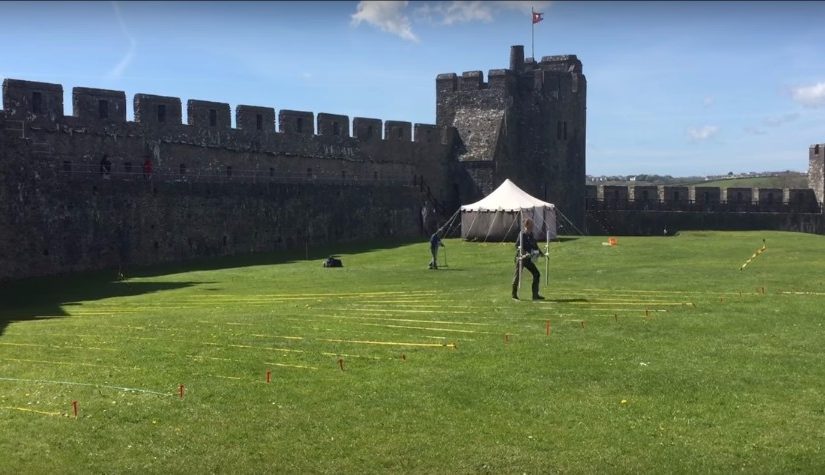The deadline for grant applications passed on 15th December and we’re going through the various projects now. Altogether the 11 projects, coming from all parts of the British Isles and Italy, are asking for over £50,000. They cover a wide period of history and types of research. For a little more detail, here are the applications we’ve received:
- Abergavenny Castle, Wales – a geophysical survey of the whole site. The castle was an important baronial site and saw a lot of military action from when it was first built in the 11th century up until it was slighted (partially demolished) in the Civil War.
- Bamburgh, England – assess and conserve a large collection of medieval metal work dating from the 8th to the 11th century discovered in the west ward. Bamburgh was a major elite fortress from the early medieval period so the project should help potentially understand how the site changed over the centuries.
- Caldicot Castle, Wales – geophysical of the whole scheduled area. Building on the previous resistivity survey in the project will use all three types of survey technique to get the best understanding of any below ground remains of this major baronial site.
- Castle Pulverbatch, England – geophysical and photogrammetric surveys of the site, one of the finest examples of a Norman motte-and-bailey castle in Shropshire.
- Clifford Castle, England – geophysical survey and excavations to help understand the morphology of one of the earliest castle sites in the UK, and one of the principal castles on the Anglo-Welsh border. Please note this is a privately owned site and not accessible to the general public.
- Dinas Bran, Wales – geophysical survey of the most extensive and complete Welsh-built castle to understand what structures lie beneath the surface.
- Edinburgh Castle, Scotland – mapping and categorising suspected conflict damage at this iconic castle.
- Fotheringhay, England – understanding the morphology of the caput of the honor of Huntingdon and 15th-century palace associated with the House of York and birthplace of Richard III, using ground penetrating radar and small unmanned aircraft. Please note this is a privately owned site and not accessible to the general public.
- Lathom House, England – analysis of masonry dating from the late 15th-century castle built by Thomas, Lord Stanley either found via excavations or potential reused in the current building.
- Lecce, Italy – to help with the publication of a history of the castle of Lecce which was founded by the Normans.
- Lough Key, Ireland – to improve understanding of the medieval MacDermot lordship of Moylurg and its relationship with the Rock of Lough Key.
The applications have been sent to our expert assessors who will go over them. You can see how the assessment process works from our blog back in January 2016.
